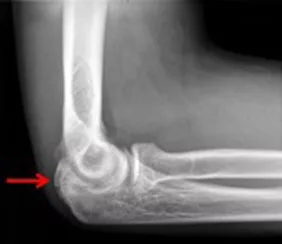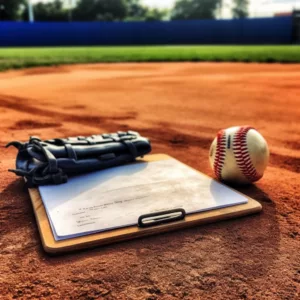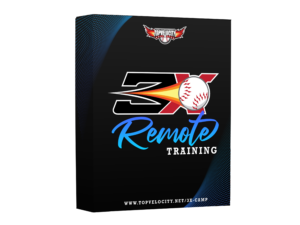 Do you need help managing Little League Pitch Counts? It starts with this article!
Do you need help managing Little League Pitch Counts? It starts with this article!
The increased number of elbow injuries among youth baseball players has caused substantial worry in recent years. Little League adopted throwing standards to reduce the risk of injuries in response to this issue. However, questions have been raised about the usefulness of these guidelines. This article examines the adequacy of existing Little League pitching guidelines using data from a single-season prospective MRI research undertaken by Andrew V. Pytiak, MD, Phillip Stearns, CPNP, MSN, and Andrew T. Pennock, MD.
The research focuses on the alterations shown on magnetic resonance imaging (MRI) scans of youth baseball players' elbows before and after the season. The study intends to shed light on the prevalence of MRI abnormalities among pitchers with high Little League Pitch Counts and poor guideline compliance by identifying risk variables for discomfort and MRI abnormalities, particularly in connection with current Little League recommendations. The researchers provide useful insights into the efficiency of existing guidelines in protecting the well-being of young baseball players through a cohort study design and rigorous statistical analysis.
Understanding Elbow Injuries in Young Baseball Players
 Elbow injuries in youth baseball have increased, causing alarm among parents, coaches, and medical professionals. These injuries can have a long-term influence on young athletes' ability to participate in sports and perhaps their future jobs. Little League throwing standards were developed in response to this problem, with the goal of reducing elbow injuries and promoting the long-term health of young baseball players.
Elbow injuries in youth baseball have increased, causing alarm among parents, coaches, and medical professionals. These injuries can have a long-term influence on young athletes' ability to participate in sports and perhaps their future jobs. Little League throwing standards were developed in response to this problem, with the goal of reducing elbow injuries and promoting the long-term health of young baseball players.
The Research: Investigating MRI Changes and Risk Factors
Pytiak et al.'s research looked at the pre-and postseason alterations in the elbows of youth baseball players using MRI scans. The researchers wanted to find risk factors for discomfort and MRI abnormalities, and they wanted to see how the existing Little League standards affected them. The study hypothesized that pitchers with high Little League Pitch Counts and poor guideline compliance would have a higher prevalence of MRI abnormalities.
Level of Evidence: Cohort Study Design
The study used a cohort study design, which is a sort of observational study in which a group of people is observed over time. This study's level of evidence was classified as Level 2, suggesting a well-designed cohort study with a good likelihood of producing accurate results.
Methods: Recruiting Players and Data Collection
The study concentrated on Little League participants aged 10 to 13. Prior to the start of the season, the players were subjected to bilateral elbow MRI scans, physical examinations, and a questionnaire about their playing history and arm problems. A repeat MRI and physical examination were performed at the end of the season. The MRI scans were evaluated by blinded radiologists, while player information such as innings played, pitch counts, and guideline compliance were recorded throughout the season. To compare physical examination findings and player statistics between patients with and without MRI changes, statistical procedures such as chi-square and analysis of variance were applied.
Results: The Study's Findings
The study included a total of 26 participants. Surprisingly, despite complete adherence to the pitching parameters, 12 players (48%) showed aberrant MRI findings, and 28% reported pain during the season. The difference in distal humeral physeal width between pre- and postseason measures was substantial (1.54 vs. 2.31 mm, P.001). Furthermore, there was a significant loss of shoulder internal rotation, which averaged 11° during the season. Surprisingly, the study showed no correlation between MRI alterations and characteristics like pitch counts, player position, or curveball/slider throwing. Anomalies, on the other hand, were associated with year-round play (P.05). The study also found that nonenforced recommendations, such as avoiding single-sport specialization, year-round play, and throwing curveballs/sliders, were not followed as well (50%).
Evaluation of the Adequacy of Little League Pitch Count Guidelines
 According to the study's findings, arm soreness and MRI anomalies of the medial elbow are common among Little League baseball players, even among those who follow the existing Little League pitching standards. The significant prevalence of anomalies, despite guideline compliance, raises concerns about the existing rules' sufficiency in preventing injuries, particularly in the case of year-round players. To maintain the optimal safety and well-being of young baseball players, more research and reevaluation of the standards may be required.
According to the study's findings, arm soreness and MRI anomalies of the medial elbow are common among Little League baseball players, even among those who follow the existing Little League pitching standards. The significant prevalence of anomalies, despite guideline compliance, raises concerns about the existing rules' sufficiency in preventing injuries, particularly in the case of year-round players. To maintain the optimal safety and well-being of young baseball players, more research and reevaluation of the standards may be required.
Management Techniques for Little League Pitch Counts
Based on the empirical evidence from Pytiak, Stearns, and Pennock's single-season prospective MRI study, it is critical to consider the findings while managing little league pitchers. While the current Little League pitching restrictions may not be completely effective in reducing elbow injuries, there are a number of best practices that may be applied to emphasize the health and well-being of young pitchers. Here are some major suggestions:
- Monitoring Pitch Counts: It is critical to regularly monitor the pitch counts of little league pitchers. Despite the fact that the study found no significant link between pitch counts and MRI abnormalities, it is nevertheless vital to set proper boundaries to avoid overuse. Coaches, parents, and league officials should set pitch count limits depending on age and stick to them.
- Rest and Recovery: It is critical to provide pitchers with ample rest and recovery time. The study discovered a considerable decrease of shoulder internal rotation during the season, emphasizing the significance of resting the body between pitching outings. Implementing scheduled rest days and allowing pitchers enough time to recover can help lessen the risk of injury.
- Correct Training and Mechanics: Stress the significance of correct pitching mechanics and techniques. Coaches should ensure that pitchers receive adequate training to establish sound mechanics that reduce elbow stress. Proper form and technique can help to prevent tension on the elbow joint, lowering the risk of injury.
- Individualized Approach: Recognize that each pitcher is unique, with varying physical abilities and limitations. It is critical to customize training and workload to the particular needs of each pitcher. This includes things like their age, physical maturity, and previous injury history. Individualized techniques can aid in preventing the overuse of young arms.
- Education and communication: Inform players, parents, coaches, and league officials about the dangers of injury and the significance of injury prevention. Encourage pitchers to disclose any pain or discomfort they are experiencing by encouraging open lines of communication. Encourage players to speak up if they are feeling tired or showing indicators of potential injury.
- Off-Season Rest: Make time for off-season rest and rehabilitation. According to the study, year-round play was related with a higher prevalence of anomalies. Allowing players to recover and participate in other sports or activities during the offseason can help prevent overuse injuries and enhance overall physical development.
It is important to stress that, while the study's empirical evidence informs these recommended practices, they should be adopted in conjunction with current research and medical professional supervision. Little league coaches, parents, and league officials can take proactive measures to ensure the safety and well-being of young pitchers by embracing these techniques.
Frequently Asked Questions (FAQs): Little League Pitch Counts
Q1: What are the pitching guidelines for Little League?
The Little League pitching standards are a collection of regulations aimed to keep young baseball players' elbows safe. They offer advice on pitch counts, rest intervals, and other things that support appropriate arm development and upkeep.
A1: Why do players sustain elbow injuries despite the Little League pitching guidelines?
While the Little League throwing restrictions are intended to limit the incidence of elbow injuries, they may be ineffective for a variety of reasons. Poor compliance, year-round participation, and other unenforced restrictions, such as avoiding single-sport specialization and throwing curveballs/sliders, can all contribute to the occurrence of injuries despite adherence to guidelines.
Q2: What did the MRI study of the athletes' elbows reveal?
Despite 100% compliance with pitching rules, 48% of the enrolled players had aberrant MRI findings, according to the MRI research. This implies that irregularities can arise even among players who follow the present standards, emphasizing the importance of future examination and revision of the guidelines.
A2: Did pitch counts and player positions have any effect on the MRI results?
Surprisingly, the study found no significant link between pitch counts, player position, and MRI scan alterations. This implies that variables other than pitch counts and player positions may be more important in influencing the occurrence of anomalies.
Q3: Is year-round participation related to increased MRI abnormalities?
Yes, the study discovered that year-round play was linked to MRI scan abnormalities. This shows that the continuous and intense nature of year-round gaming may lead to a higher occurrence of injuries among such players.
A3: What are the study's findings' implications?
The study's findings call into doubt the present Little League pitching guidelines' effectiveness in preventing elbow injuries. They stress the significance of taking into account additional risk factors and reevaluating recommendations in order to better protect the health and well-being of young baseball players.
Take Action and Rebuild Velocity with the 3X Pitching Velocity Program
 As you emphasize your young pitchers' relaxation and rehabilitation throughout the offseason, it's critical to also focus on their development and rebuilding for the next season. The 3X Pitching Velocity Program can help with that. This program is designed to enhance performance and prevent injuries, and it is the ideal answer for offseason rest, healing, and rebuilding.
As you emphasize your young pitchers' relaxation and rehabilitation throughout the offseason, it's critical to also focus on their development and rebuilding for the next season. The 3X Pitching Velocity Program can help with that. This program is designed to enhance performance and prevent injuries, and it is the ideal answer for offseason rest, healing, and rebuilding.
The 3X Pitching Velocity Program is a thorough training program designed exclusively for pitchers who want to improve their velocity and pitching mechanics. This program, developed by industry specialists and supported by scientific principles, presents a methodical approach to boosting pitching performance while reducing the risk of overuse injuries.
Your young pitchers will profit from the 3X Pitching Velocity Program if they enroll.
- Structured Training Program: The program provides an organized training regimen that blends strength training, mobility exercises, and pitching-specific drills. Each part of the program is intended to improve pitching mechanics, velocity, and overall performance.
- Individualized Approach: Recognizing each pitcher's unique demands, the 3X Pitching Velocity Program offers individualized coaching and feedback. Your pitchers' coaches will work closely with them, examining their unique strengths and shortcomings and designing the program to address their areas of improvement.
- Injury Prevention Strategies: The program emphasizes injury prevention. The 3X Pitching Velocity Program seeks to keep your young pitchers healthy and on the field by focusing on proper mechanics, strengthening the major muscle groups involved in pitching, and adopting appropriate rest and recovery regimens.
- Professional Coaching: With the 3X Pitching Velocity Program, your pitchers will have access to professional coaching from seasoned coaches who understand the complexities of pitching mechanics. Throughout the training process, they will receive useful insights, feedback, and continuous assistance.
By investing in the 3X Pitching Velocity Program, you are not only giving your young pitchers the required offseason rest and rehabilitation, but you are also giving them the skills they need to take their performance to the next level. Don't pass up this chance to rebuild, increase velocity, and develop the abilities required for a successful season ahead.
Enroll your young pitchers in the 3X Pitching Velocity Program right away. Provide them with the competitive advantage they require to flourish on the mound while ensuring their long-term success and well-being. Don't put it off any longer; begin your quest to throwing perfection today!




